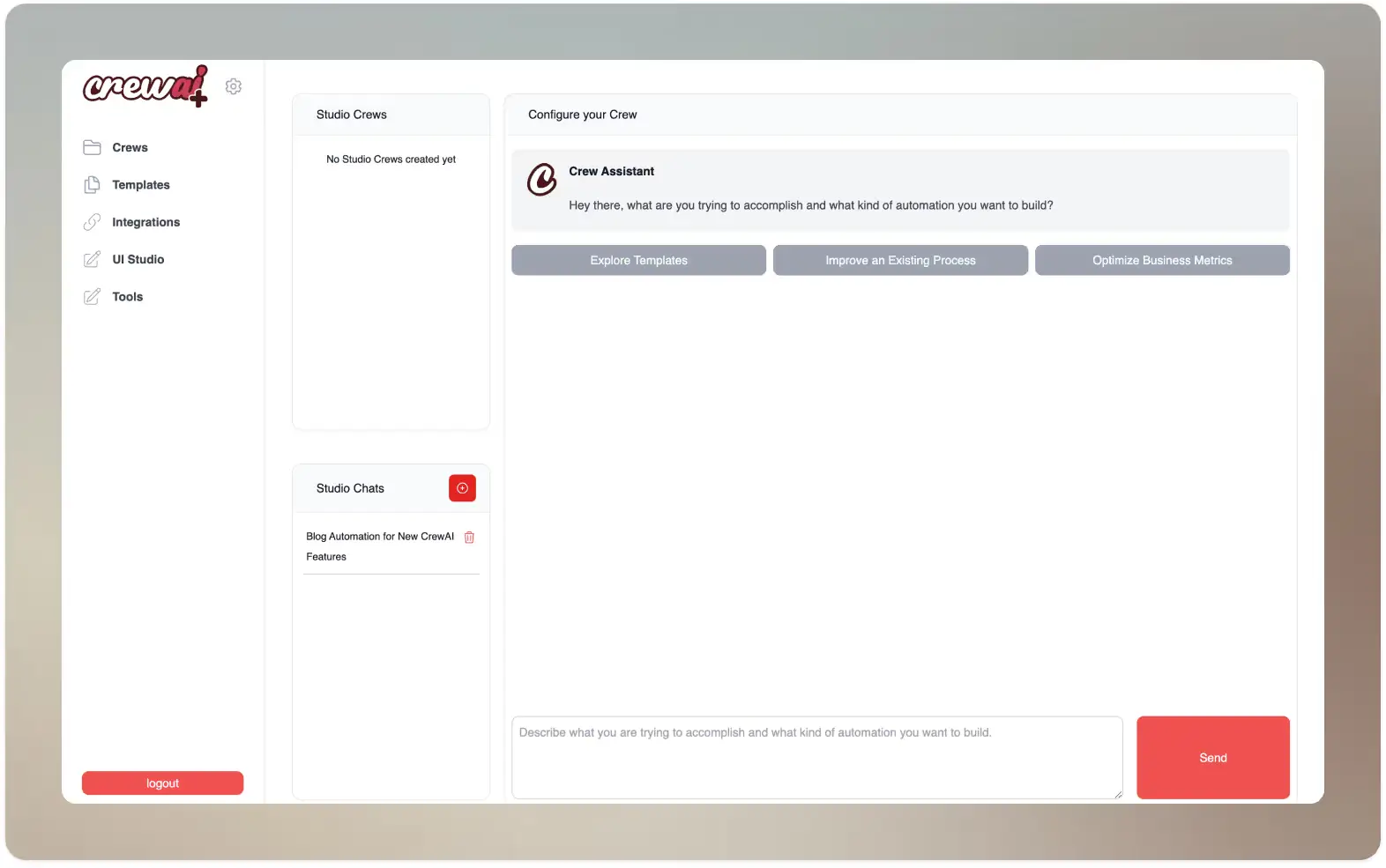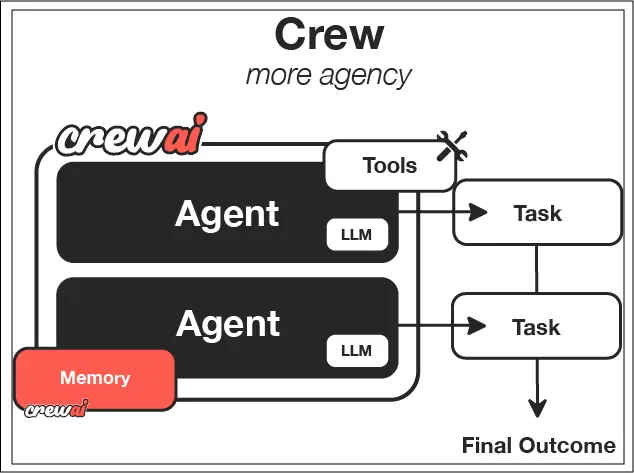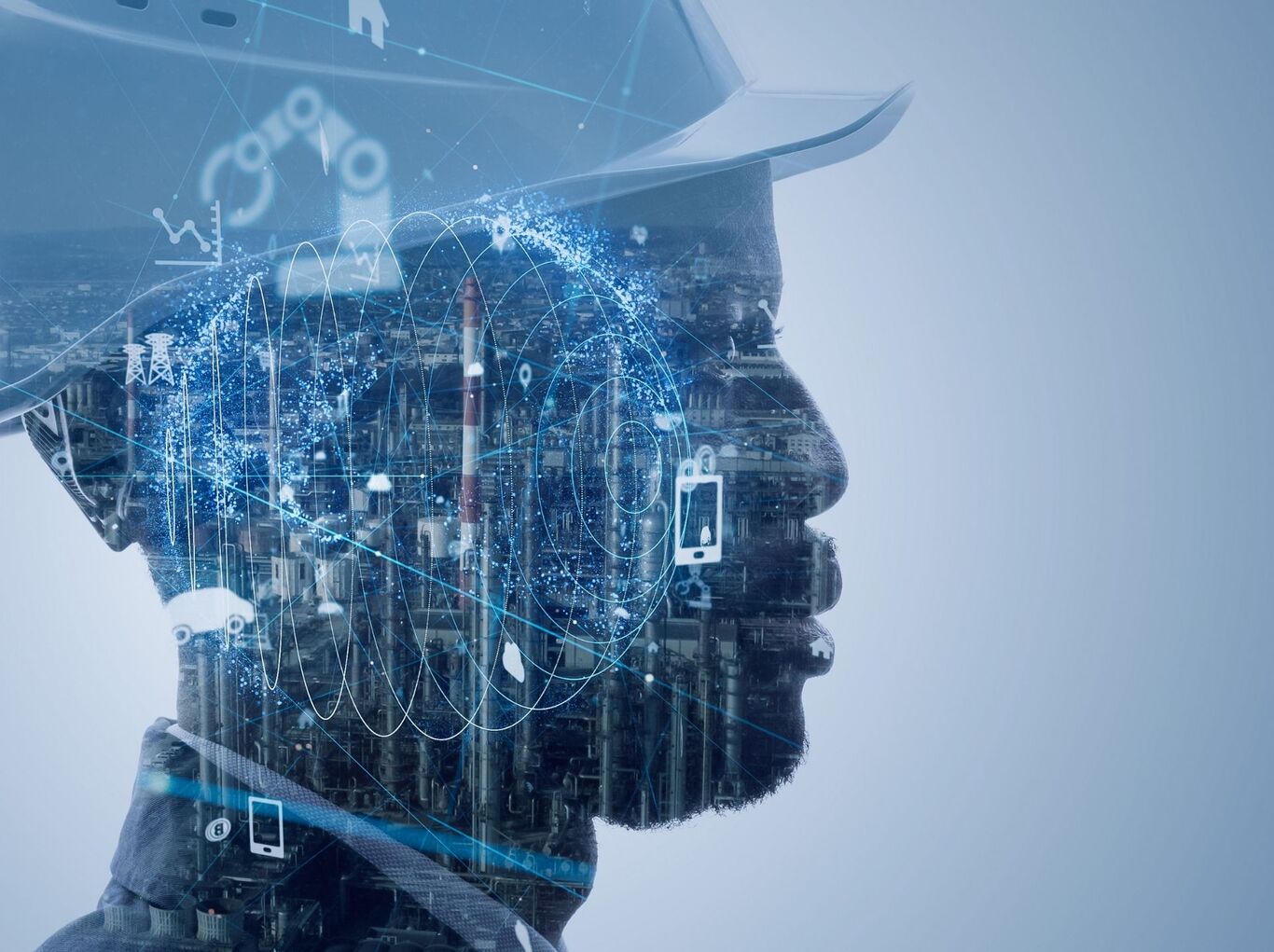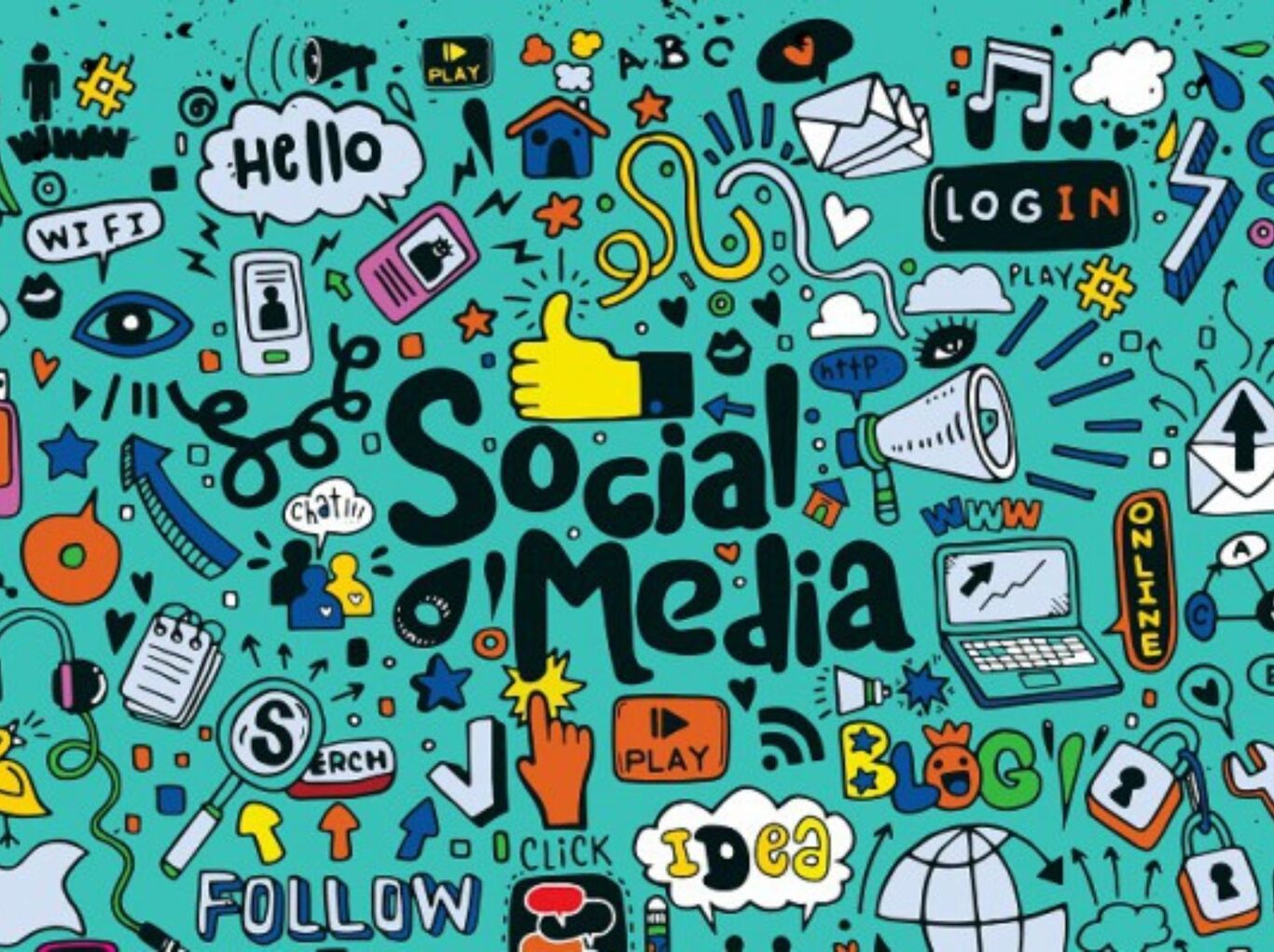What is CrewAI: Revolutionising business automation with multi-agent AI systems

While more than 78% of enterprises now use generative AI, over 80% still report no material impact. This is a phenomenon McKinsey calls the “GenAI paradox”.
CrewAI provides enterprise-grade multi-agent orchestration, which means it spins up a production-ready AI workforce where each agent has a clear role and skill set.
But, what is crewAI? It is a Python-based open‑source framework for building and orchestrating multi‑agent AI systems, where autonomous agents collaborate to complete tasks much like a real-world team. These agents collaborate on end-to-end business process automation on a large scale, moving beyond simple chatbots to autonomous systems. This leads to measurable ROI from intelligent automation.
In this blog, you’ll see how CrewAI overcomes the paradox with enterprise-grade multi-agent orchestration. See the importance of multi-agent systems and how they automate complex workflows. Learn through real-world examples, compare frameworks, and see which integrations fit your teams.
Why multi-agent AI systems are reshaping enterprise automation in 2025
Are you wondering what is CrewAI exactly? In simple words, CrewAI is a multi-agent framework that helps you design and manage specialised intelligent AI teams. Each agent has a defined role and works together with others to tackle complex tasks.
To see crewAI working in action, consider how role-based agents coordinate research, drafting, and review.
You can scale workflows for business process automation, content development, or research. You also get tight control over job flow and error handling. The result is faster time to value, lower operating costs, and measurable ROI from intelligent automation.
Understand the difference between agentic AI and AI agents and which one is a better fit
The importance of multi-agent systems for businesses across industries
The problem: Understanding the multi-agent system importance helps explain why single-agent AI stalls on complex workflows. When one model tries to handle entire workflows, even small errors cause issues, slowing down or halting operations.
Integration with diverse enterprise systems collects data points and requires custom connectors, which adds time and cost.
Here, scalability becomes a major hurdle. 85% of AI projects fail outright[1], often because pilots can’t expand beyond narrow use cases. With a single agent, adding new tasks or processing higher volumes means retraining or redesigning the whole system.
The solution: Multi-agent systems prove their worth when it comes to complex tasks that need a variety of expertise and teamwork.
They solve these pain points by breaking down work into hierarchical workflows and role-based agents. Each agent handles its specialty and hands off to the next, avoiding bottlenecks and easing integration.
CrewAI’s enterprise-grade multi-agent orchestration delivers autonomous agent collaboration for competitive advantage. Just like how skilled professionals collaborate in teams, each agent focuses on its strengths, leading to more precise and refined solutions to complex problems.
CrewAI vs alternatives: Why teams should choose a multi-agent framework
Your team evaluating multi-agent frameworks has three paths: standalone platforms, hybrid integrations, or custom builds. Below, we see why CrewAI’s standalone and LangGraph-powered options beat costly custom solutions.
CrewAI standalone
When your team needs fast, reliable orchestration, CrewAI’s independent architecture is ready out of the box. You get enterprise-grade multi-agent orchestration with role-based agents working in parallel or in sequence.
Moreover, its independent architecture eliminates vendor lock-in concerns that hover over LangChain-dependent solutions. Just production-ready AI workforce deployment that runs up to 5.76x faster[2] than other platforms.
Your employees keep full control over data, security, and compliance as you scale.
CrewAI LangGraph integration approach
If your projects demand complex branching logic or advanced state management, layer in LangGraph.
CrewAI handles high-level agent collaboration for competitive advantage, while LangGraph manages conditional workflows and real-time corrections.
This hybrid setup means you can start with CrewAI’s proven agent teamwork and add more sophisticated orchestration only when you need it.
Read our guide on setting up LangChain if you’re new to it

Closed-ecosystem alternatives
Platforms like Microsoft’s Agent Service or open-ended AutoGPT may look attractive, but they often force you into a single vendor’s tools and road map.
It holds you back when tighter security or custom connectors are non-negotiable. By contrast, CrewAI’s modular design avoids those trade-offs so your employees can focus on mission-critical outcomes, not workarounds.
Strategic decision framework
With CrewAI, you connect technical capabilities (autonomous decision-making, hierarchical workflows, and modular scaling) to real business outcomes: faster processes, lower costs, and clear ROI.
Let’s see a simple breakdown of which path would suit your employees better:
-
For quick wins: Launch CrewAI on its own to get results fast and prove ROI early.
-
To scale smoothly: Bring in LangGraph when your automations need hierarchy or custom error logic.
-
To future-proof: Steer clear of lock-in; choose a framework that adapts as your AI strategy evolves.
Implementation roadmap: Building production-ready CrewAI systems
Rolling out CrewAI isn’t just about writing code; it’s about proving value, keeping data secure, getting your team on board, and scaling smoothly.
In the steps below, we’ll guide you through building AI agents with CrewAI, from pilot design to enterprise rollout, all with an eye on competitive advantage.
1. Build your business case and project ROI
Before any code gets written, your team should map out target KPIs. Think about time saved on approvals, error rates slashed, or cost-per-ticket dropped.
Pro tip: Model your project’s NPV/IRR to demonstrate a 6-12 month payback and secure buy-in.
Point out how CrewAI’s 5.76x faster execution and autonomous agent collaboration for competitive advantage lead to lower headcount costs and quicker time to market. Or even how intelligent automation can increase productivity by 0.5-3.4% annually[3], with generative AI adding 0.1-0.6 percentage points.
That clear financial picture wins executive buy-in and sets you up for success.
2. Enterprise integration considerations
Your agents will need to talk to ERP, CRM, and data warehouses without slowing anyone down. CrewAI’s RESTful APIs and native connectors cut integration time, meaning you spend less on custom builds.
Layer in encryption at rest and in transit, role-based access controls, and audit logs to lock down compliance. Fewer custom connectors and built-in security not only reduce upfront effort but also protect you from costly breaches, which is yet another competitive edge.
3. Change management and team training
Even the best tech stalls if people don’t use it. Mix live demos with quick reference guides so employees see early wins. Quantify learning-curve improvements; faster onboarding means your team realises measurable ROI from intelligent automation weeks sooner than competitors.
Pro tip: Appoint “AI champions” in each department to run hands-on sessions and build trust in production-ready AI workforce deployment.
4. Scaling from pilot to enterprise
Start with a tight pilot: invoice approvals or customer triage work well, so you can measure results against your ROI model.
Pro Tip: Kick off with a focused pilot (e.g., invoice approvals) to prove ROI quickly.
Once you hit your targets, roll out additional agent clusters simultaneously. Keep stakeholders updated through your AI Automation hub, using real-time dashboards to show incremental gains.
That continuous tracking and quick pivoting help your organisation stay ahead of market shifts and maximise return on your CrewAI investment.
Intellsys.ai unifies multiple tracking tools into one real-time dashboard
Real-world CrewAI use cases: How enterprises achieved high ROI
Let’s look at two enterprise examples to see how CrewAI led to measurable ROI from intelligent automation. These cases show how role-based agents and hierarchical workflows bring in faster, cheaper, and smarter operations.
1. JPMorgan COiN document review
JPMorgan’s Contract Intelligence (COiN) platform automates the review of commercial-loan agreements that once consumed 360,000 lawyer-hours[4] annually.
By orchestrating specialised AI agents for data extraction, validation, and summarisation, CrewAI-style workflows could turn months of manual review into seconds and save millions in operational costs.
-
Siemens predictive maintenance teams
Siemens deployed AI-driven agent teams to monitor equipment health across its factories. The result was a 40% reduction[5] in unplanned downtime and a 50% cut in maintenance costs, translating into millions in avoided losses each year.
With CrewAI’s multi-agent framework, you can scale similar predictive workflows across lines and sites.
3. Other CrewAI use cases
CrewAI’s multi-agent framework adapts to any domain, whether you’re drafting reports, automating customer support, analysing financial data, or generating marketing copy. In each case, you group agents by specialty so they share work without stepping on each other’s toes.
In content writing, for example, one agent handles research, another drafts the text, and separate agents take care of editing and fact-checking. Each agent focuses on its task, so you get an accurate, polished copy in record time.
Check out how agentic AI in e-commerce is making the industry better
Overcoming enterprise challenges: security, governance, and scale considerations
Enterprises moving to CrewAI often ask, “What is CrewAI’s policy? How do we lock down data, stay compliant, and still scale without chaos?” Here’s how you can address those C-suite concerns with practical guardrails:
1. Data security and regulatory compliance
Your AI agents will have access to sensitive information like customer records, financials, and proprietary IP. Treat them like any other production service:
-
Encryption: Enforce TLS for data in transit and AES-256 for data at rest.
-
Access controls: Use role-based access (RBAC) and integrate with your existing identity provider (Okta, Azure AD).
-
Audit trails: Log every agent action: inputs, decisions, and handoffs to support GDPR, HIPAA, or ISO 27001 audits.
2. Agent governance and autonomous behavior
Unsupervised AI can get out of hand or take unexpected steps. Build governance layers that:
-
Define clear boundaries: Limit what each agent can read, write, or execute via scoped permissions.
-
Human oversight: Trigger reviews for high-risk decisions or quota limits (e.g., transaction amounts over a threshold).
-
Drift detection and rollback: Track agent outputs for anomalies and automatically roll back to a known-good state if things go off track.

3. Scaling with confidence
As you grow from pilot to 100+ agents, orchestration and resilience become important:
-
Containerised deployment: Run agents in Kubernetes or similar tools, so you can spin up or shut down nodes automatically.
-
Load balancing and circuit breakers: Distribute tasks evenly and prevent failures when one service slows down.
-
Chaos testing: Regularly inject faults (network latency, dropped messages) to validate your error-handling workflows.
CrewAI future: Strategic implications for enterprise transformation
CrewAI is changing rather quickly, and the difference is just starting to show. These systems will be able to handle more complicated jobs with less human supervision as agent autonomy grows.

Just like how agentic AI is going to redefine our future, CrewAI is going to change how your organisation works, who does what, and how you stand out in the market. Here’s what the CrewAI future holds:
1. New organisational layers
As agents take on routine and complex tasks alike, companies will shift from traditional hierarchies to fluid “human-agent teams.” Managers may oversee ensembles of agents rather than individual contributors, freeing employees to focus on strategy and creativity.
2. Evolving job roles
Be open to roles like “Agent Orchestrator” or “AI Workflow Designer” to join your org chart. Employees will move from execution to oversight, defining agent goals, monitoring performance, and refining handoffs for continuous improvement.
3. Industry-specific ecosystems
Tailored CrewAI variants will emerge for sectors. Healthcare agents handling patient triage, finance agents automating compliance checks, or manufacturing agents optimising production lines, making AI orchestration a core part of every industry.
Despite its strengths, real-world implementation brings CrewAI challenges like prompt reliability and agent coordination at scale.
Final thoughts on what is CrewAI and how it can help
CrewAI shows that building intelligent systems doesn’t mean starting from scratch. It’s about orchestrating the right agents, giving them the right tools, and structuring how they work together.
Whether you're managing a multi-step content pipeline or building operational assistants that scale, CrewAI gives you a clear framework to do it well.
As multi-agent systems become more central to how businesses use AI frameworks like CrewAI will play a key role in shaping real-world applications. With features like CrewAI LangGraph integration and flexible workflows, the possibilities are only growing.
As a business accelerator in India, we guide founders and businesses to turn frameworks like CrewAI into production-ready systems. If you're building with agents, we can help you move faster and go deeper without the guesswork.
FAQs on what is CrewAI
1. Is CrewAI better than LangChain?
CrewAI outperforms LangChain in enterprise settings thanks to its standalone architecture, 5.76x faster execution, and built-in orchestration.
Unlike LangChain-based solutions, it avoids vendor lock-in, offers tighter security controls, and provides production-ready agent collaboration.
2. What is CrewAI, and what are CrewAI benefits?
CrewAI offers enterprise-grade multi-agent frameworks, role-based agent specialisation, hierarchical workflows, and autonomous decision-making. It scales complex processes at an advanced speed, ensures compliance with built-in security and governance, and delivers measurable ROI from intelligent automation.
3. Does CrewAI require coding experience?
CrewAI provides high-level APIs and prebuilt modules, so basic Python knowledge suffices for most configurations.
While custom agent development benefits from coding skills, non-developers can deploy and manage workflows with minimal scripting using CrewAI’s intuitive interfaces.
4. What is the difference between ReAct Agent and CrewAI?
ReAct agents follow a single-agent reasoning-action loop, combining tools and language for individual tasks. CrewAI, by contrast, orchestrates multiple specialised agents in hierarchical workflows, allowing collaborative automation and end-to-end process management at enterprise scale.








